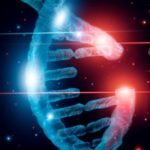
Cellular Concentrate Therapy
Cellular therapies have been commonly described as ‘stem cell therapies’. It is more accurate to discuss stem cell therapies to describe injections that only have stem cells in the injection. These highly synthesized injections can only be achieved by means of culturing that are not currently allowed by US FDA. I was able to perform these types of procedures for patients for years before the FDA asserted control of the person’s own stem cells through regulation.
Cellular therapies that are available in United States are mixed populations of cells from fibroblasts to stem cells to white blood cells, some red blood cells and other types of cells. Overall, the proportion of stem cells in the solutions is relatively small. Despite smaller numbers, a cellular therapies can be potent and effective.
In keeping with the Regenerative Masters perspective, it is not the power or the purity of any type of injection that leads to healing of an individual. Those are merely a portion of the approach for each person. That overall plan must include neurologic function, neuromuscular patterns, posture, alignment, recruitment abilities, activation patterns, physiologic function, immune function, mood contributions, and structural aspects of deterioration.
Also, importantly, assessment of soft tissue supports that addresses the underlying structural dependencies locally/regionally is also critical. Use of guided injections that heal the roots of structural problems must be the basis for treatment if the long-term healing and function of a person is the goal.
Different types of cellular therapies:
Bone marrow concentrate:
bone marrow is typically obtained from the Ilia – the long curved flat bones of the pelvis. Dr. Hanson has pioneered many different methods of bone marrow aspiration since 2010. Currently, he is using his 10th version of the procedure which doubles as a means of helping to restore pelvic stability. Marrow concentrate is very useful for joints, disc, advanced tendon and advanced ligamentous deterioration.
Adipose cellular concentrate
Adipose in its raw form has a moderate amount of stem cells in the stromal fraction of the tissue. This can be accessed by a mini liposuction procedure. It is a fairly simple and routine procedure. Various methods of preparation are still currently allowed and research continues to expand. Use of adipose concentrate in joints, advanced tendon and around nerves produces successful outcomes success for Dr. Hanson’s patients.
Synovial concentration:
After appropriate stimulation, the synovial fluid from a knee joint can be used as a regenerative agent. The hyaluronic acid and proteoglycans inside of the joint fluid as well as some cells are helpful for regeneration of joints and around nerves.
Vascular aspirate concentrate:
Dr. Arthur Kaplan as produced research showing that capillaries are highly invested with mesenchymal stem cells. Appropriately stimulating vascular regions and aspirating cells from around those regions allows for very unique and highly useful cellular concentrate for joints, tendons, ligaments, around nerves and particularly in the spine/discs.
Osseous concentrates:
within bones, the spongy or trabecular bone is heavily invested with mesenchymal stem cells. Via simple washing techniques, the cells can be acquired from this bone and be used for regenerative means for nearly every type of tissue.
Again, it is important to consider that cellular concentrates alone are only piece of the overall regenerative puzzle. Assessment, procedures, precise guidance, and all other supportive care are at least as important as the cellular source and its potency/purity.
Allogeneic tissue:
though I will not spend large amounts of time discussing this, use of amniotic and umbilical tissue is fraught with challenges from the regulatory standpoint, your immune system, a viability standpoint and minimal research to support its use. The vast majority of research shows no viable cells within these concentrates. Dr. Hanson believes in a person’s own cells being used to heal them.
